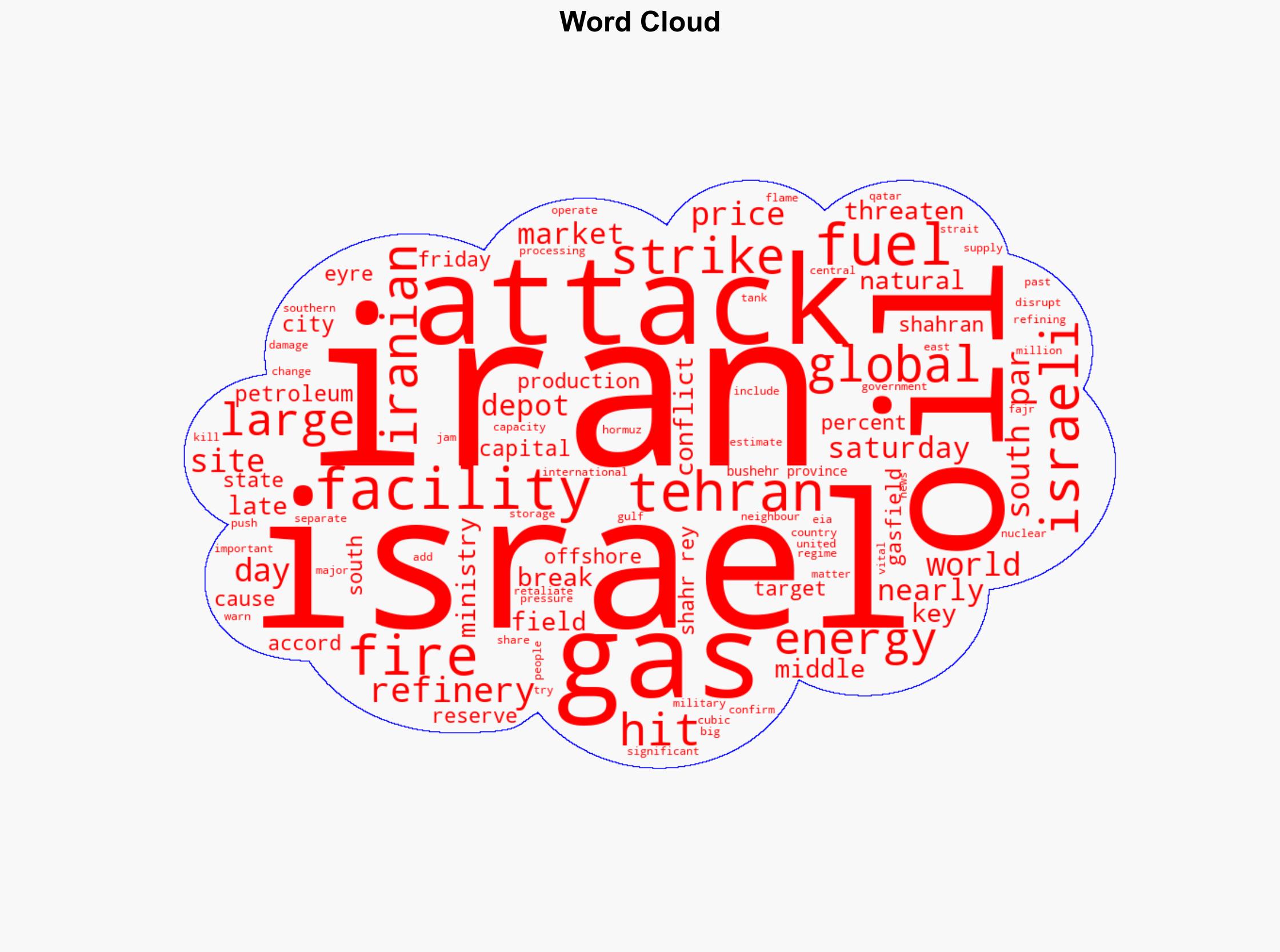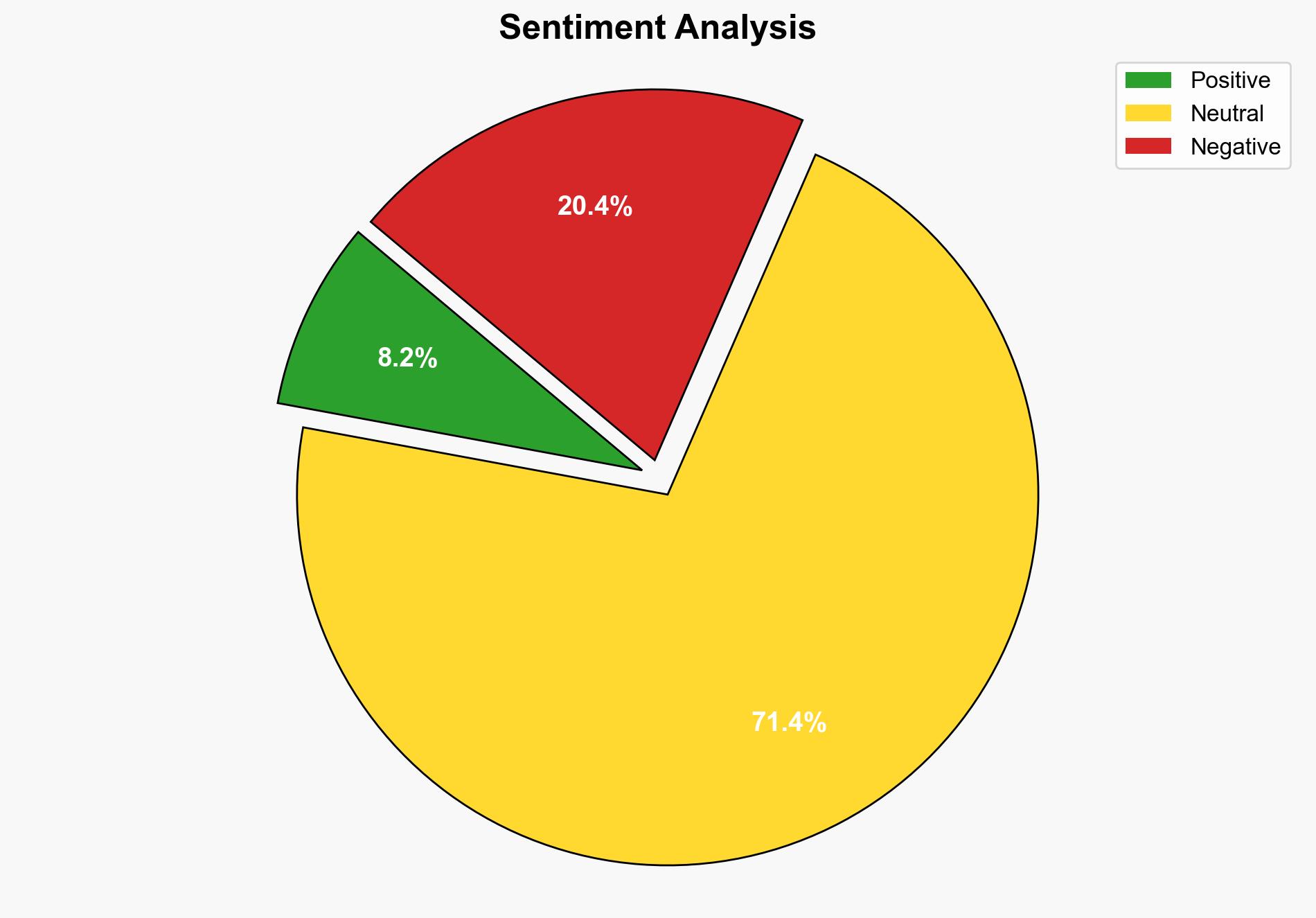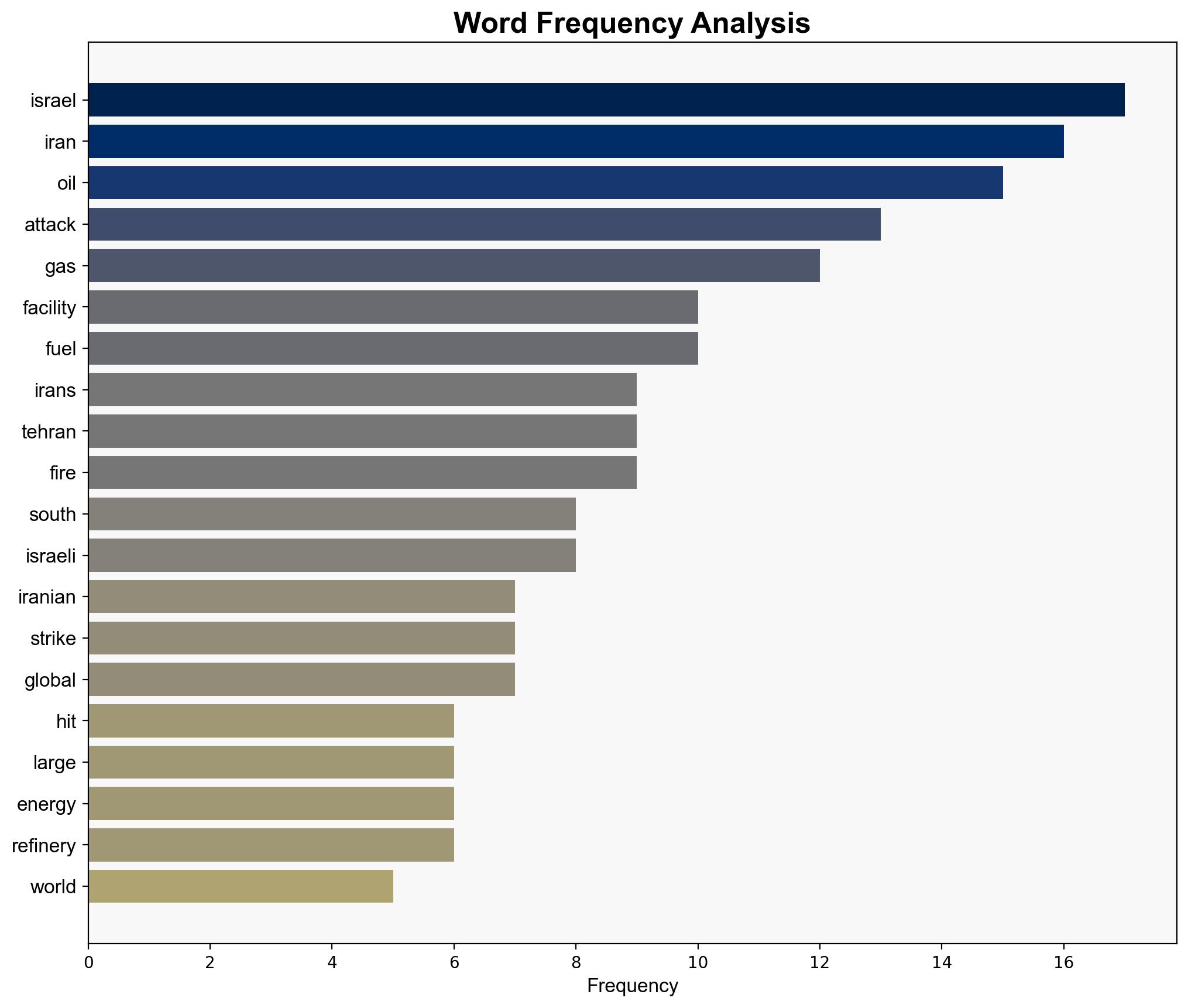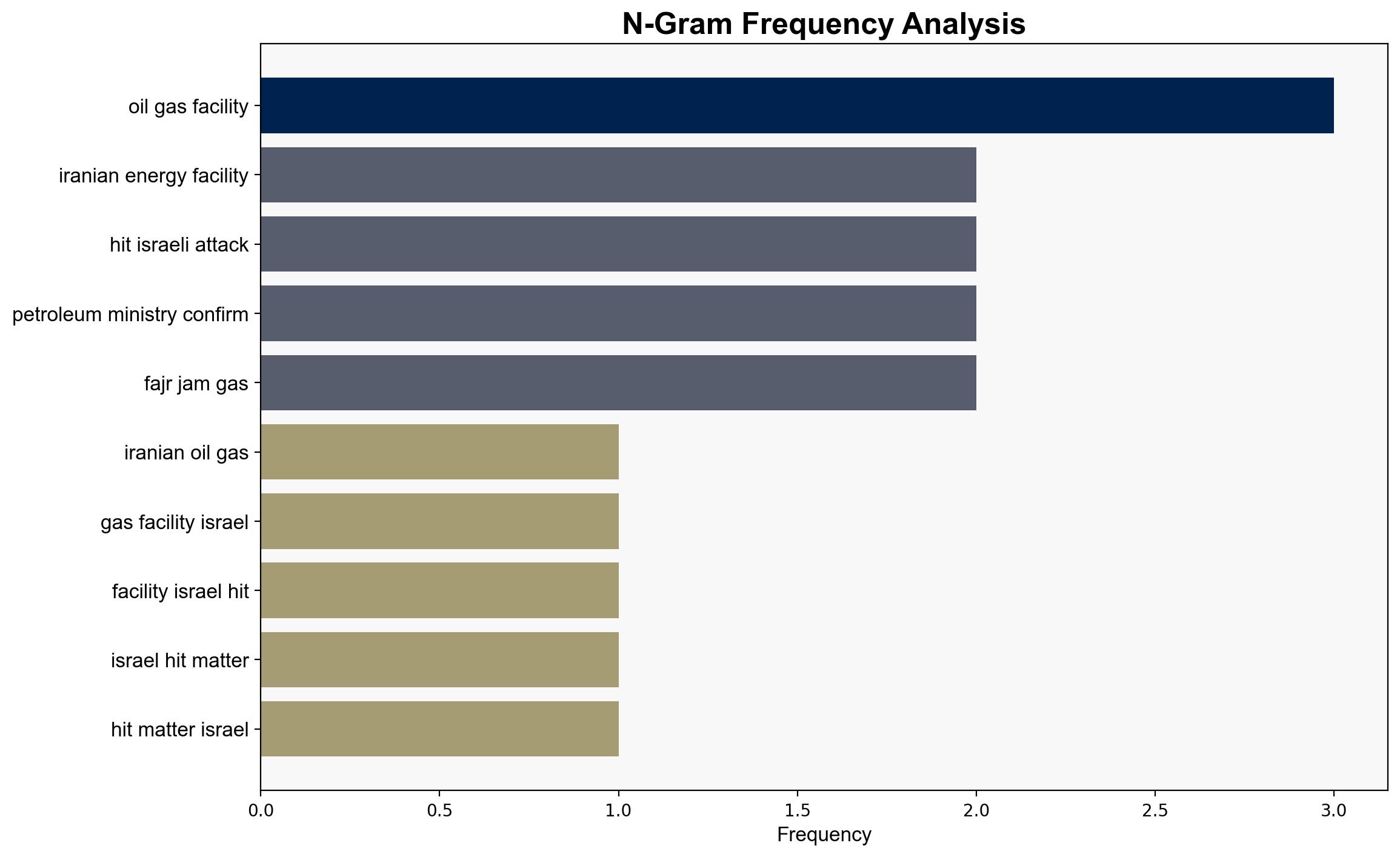Which Iranian oil and gas facilities has Israel hit Why do they matter – Al Jazeera English
Published on: 2025-06-15
Intelligence Report: Which Iranian Oil and Gas Facilities Has Israel Hit and Why Do They Matter
1. BLUF (Bottom Line Up Front)
Recent Israeli strikes on key Iranian oil and gas facilities, including the South Pars gas field and Shahran fuel depot, have heightened regional tensions and risk significant disruptions to global energy markets. These actions mark a shift in Israel’s strategic targeting, potentially escalating the conflict and impacting global oil and gas prices. Immediate diplomatic engagement and strategic risk assessments are recommended to mitigate further escalation.
2. Detailed Analysis
The following structured analytic techniques have been applied to ensure methodological consistency:
Causal Layered Analysis (CLA)
Surface events include the Israeli strikes on Iranian energy infrastructure. Systemic structures involve the geopolitical rivalry between Israel and Iran, with energy resources as a strategic focal point. Worldviews reflect the long-standing enmity and strategic calculations of both nations. Myths include the perception of energy dominance as a lever of regional power.
Cross-Impact Simulation
The strikes could trigger retaliatory actions from Iran, affecting neighboring countries and global energy markets. The potential for military escalation remains high, with economic dependencies on Middle Eastern oil and gas exacerbating global vulnerabilities.
Scenario Generation
Potential scenarios include: 1) Escalation leading to broader military conflict; 2) Diplomatic intervention resulting in de-escalation; 3) Prolonged low-intensity conflict affecting energy supplies.
Network Influence Mapping
Key actors include Israeli and Iranian military and political leaders, regional allies, and global energy market stakeholders. Their interactions and decisions will significantly influence the conflict’s trajectory.
Bayesian Scenario Modeling
Forecasting suggests a high probability of continued tensions, with a moderate likelihood of further strikes. Diplomatic resolutions remain uncertain but are critical to preventing wider conflict.
3. Implications and Strategic Risks
The strikes on Iranian energy facilities pose significant risks to global oil and gas supply chains, potentially leading to increased prices and market instability. Politically, the actions may provoke Iranian retaliation, increasing the risk of military conflict. Economically, disruptions could impact global energy-dependent industries, while cyber threats to energy infrastructure could escalate.
4. Recommendations and Outlook
- Engage in diplomatic efforts to de-escalate tensions and prevent further military actions.
- Enhance security measures for critical energy infrastructure globally to mitigate potential cyber threats.
- Scenario-based projections: Best case – Diplomatic resolution and stabilization of energy markets. Worst case – Full-scale military conflict disrupting global energy supplies. Most likely – Continued low-intensity conflict with sporadic disruptions.
5. Key Individuals and Entities
Notable figures include Israeli Defense Minister Israel Katz and unnamed Iranian military officials involved in strategic decision-making.
6. Thematic Tags
national security threats, energy security, Middle East conflict, geopolitical tensions





